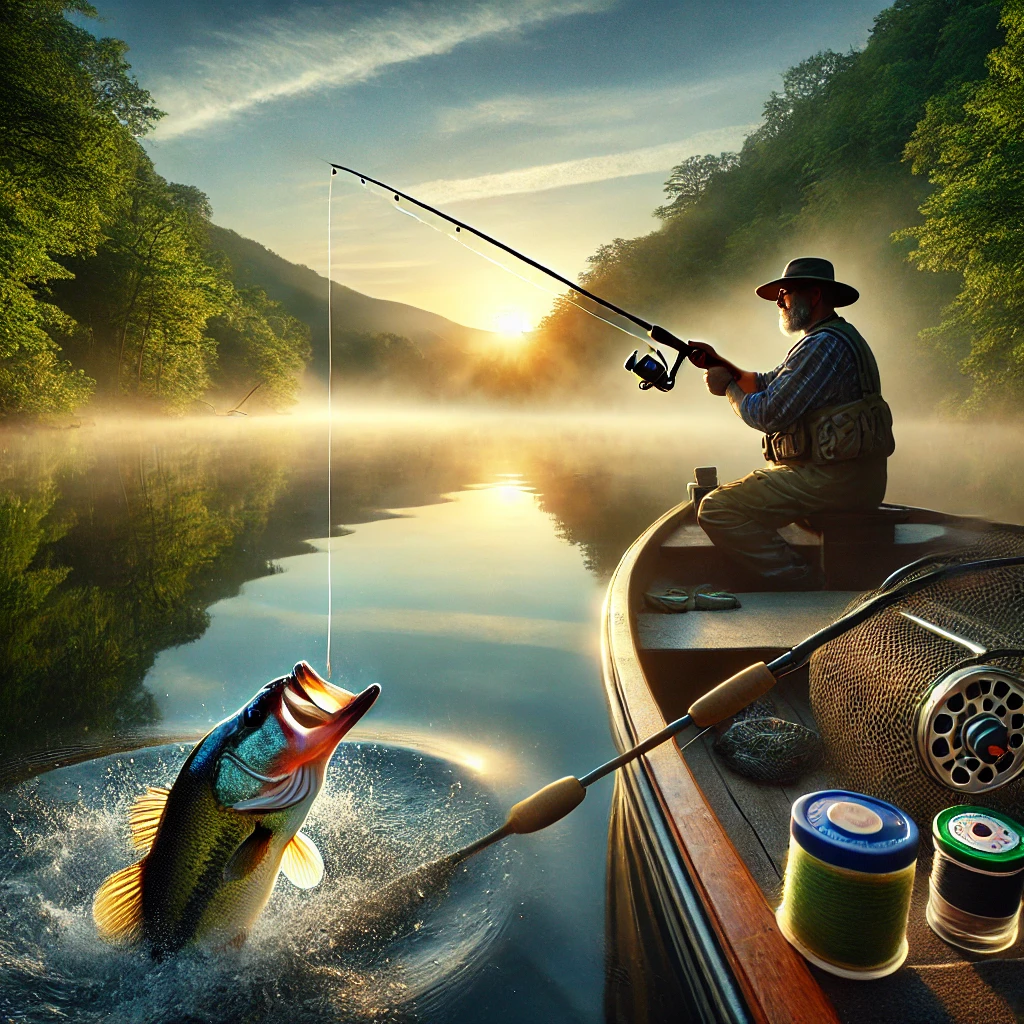Bass Fishing: What's Important

Bass fishing isn’t just a hobby; for many, it’s a passion, an adventure, and sometimes, a competitive sport. Whether you’re casting your line for the first time or you’re an experienced angler aiming to refine your technique, knowing what’s important in bass fishing can make all the difference. From choosing the right gear to understanding the habits of bass, every detail plays a crucial role in your success. So, grab your fishing rod and let’s dive into the essentials of bass fishing!
Understanding Bass: Know Your Fish
Bass are known for their fighting spirit, making them one of the most sought-after game fish. There are two primary types of bass that anglers target: largemouth bass and smallmouth bass. Each has unique characteristics and preferred habitats.
Largemouth Bass
Largemouth bass are often found in warm, shallow waters with plenty of cover such as weeds, logs, and docks. They are ambush predators, meaning they like to hide and wait for their prey to come close before striking. This aggressive behavior is what makes catching them so thrilling.
Smallmouth Bass
Smallmouth bass prefer cooler, clearer waters with rocky bottoms and fast currents. They are known for their acrobatic jumps and fierce resistance when hooked. Understanding these preferences helps in selecting the right fishing spots and techniques.
Essential Gear for Bass Fishing
Having the right gear is half the battle in bass fishing. Here’s a breakdown of what you need:
Fishing Rod and Reel
For bass fishing, a medium to medium-heavy rod with a fast action tip is ideal. Spinning reels are great for beginners, while baitcasting reels offer more control for experienced anglers.
Fishing Line
Braided line offers strength and sensitivity, fluorocarbon is nearly invisible underwater, and monofilament provides stretch for topwater lures. Choose based on your fishing conditions and lures.
Lures and Baits
Bass are opportunistic feeders, so having a variety of lures is crucial. Topwater lures for early morning or late evening, crankbaits for covering water, soft plastics for finesse techniques, and jigs for bottom fishing are essential in your tackle box.
Tackle Box
Keep your tackle organized with a sturdy tackle box. Include extra hooks, sinkers, swivels, and pliers for a smooth fishing experience.
Techniques That Work
Mastering different fishing techniques can significantly increase your chances of landing a big bass. Here are some popular methods:
Topwater Fishing
There’s nothing more exciting than seeing a bass explode on a topwater lure. Use frogs, poppers, or buzzbaits to create surface disturbances that attract bass.
Jig Fishing
Jigs are versatile and can be used year-round. Drag them along the bottom, hop them over structures, or swim them through cover to entice bass.
Drop Shot Rig
This finesse technique involves a hook tied above a weight, allowing the bait to hover just off the bottom. It’s particularly effective in clear waters and during tough fishing conditions.
Crankbait Fishing
Crankbaits are great for covering large areas quickly. Their diving ability and wobbling action mimic baitfish, making them irresistible to bass.
Finding the Best Spots
Location is key in bass fishing. Look for areas with ample cover such as weed beds, submerged structures, or drop-offs. Bass also tend to gather around points, coves, and the mouths of creeks, especially during spawning season.
Seasonal Strategies
Bass behavior changes with the seasons, and so should your approach:
Spring
During spawning season, bass are aggressive and protective. Focus on shallow waters near spawning beds using soft plastics and jigs.
Summer
Bass move to deeper waters to escape the heat. Use deep-diving crankbaits, Carolina rigs, or drop shot rigs.
Fall
Bass feed heavily to prepare for winter. Fast-moving lures like spinnerbaits and lipless crankbaits are effective.
Winter
Bass become sluggish in cold water. Slow down your presentation with jigs and soft plastics near deep structures.
Conservation and Ethics
Responsible fishing ensures that bass populations remain healthy for future generations. Practice catch and release, handle fish with care, and respect local fishing regulations.
Bass fishing is a blend of skill, patience, and a bit of luck. With the right gear, techniques, and knowledge of bass behavior, you’re well on your way to landing that trophy fish. So, next time you head out to the water, remember what’s important, and most importantly, enjoy the experience!
Please Share this Article with your Friends or Colleagues.
From the Author: Earnest Sherrill
If there's one message I hope to leave with my readers, it's this: Don't wait. Get outside, explore, and create your own memories in the wild while you still can. Whether it's a weekend camping trip, a day hike, or even just sitting quietly in a park, the outdoors offers something for everyone.For those who share my passion or simply want to support a voice dedicated to celebrating the wild, consider helping sustain this work. Your support allows me to continue writing, reflecting, and sharing the wonders of the natural world.
Together, we can keep the spirit of the outdoors alive, one story, one adventure, and one "coffee" at a time.
Recent Posts
Submit your Site


